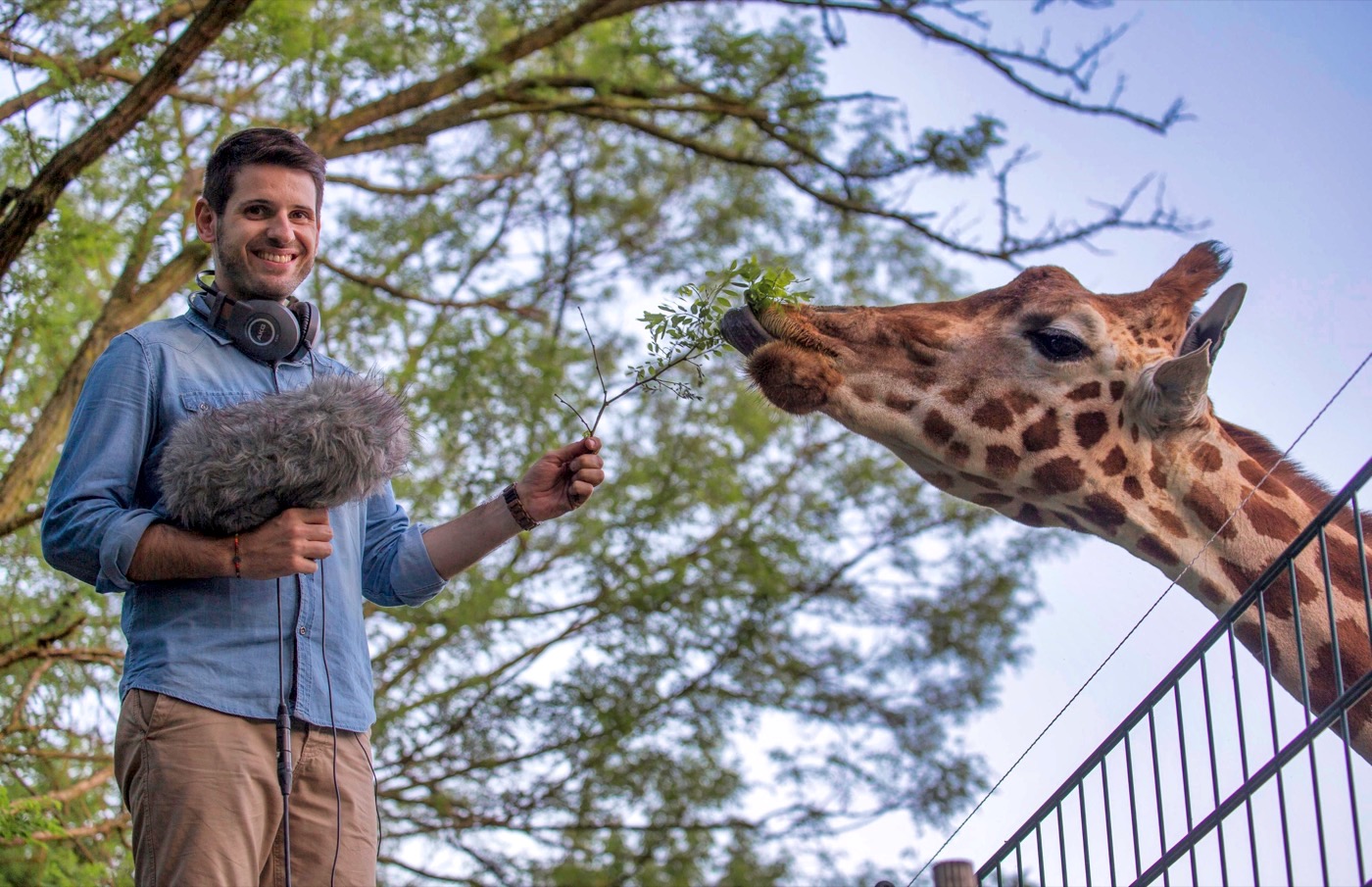The relevance of acoustics for giraffe behavior and ecology
Description
Acoustic communication is a crucial component for information exchange in species living in fission-fusion social systems, in which groups merge of and split into subunits such as in African elephants, spotted hyenas and dolphins. Despite the fact that giraffes live in such dynamic societies, the role of vocal signals for mediating social interactions or regulating group compositions remains a largely underexplored aspect of giraffe behavior and ecology. Although it has been demonstrated that giraffes produce a variety of audible sounds such as growls, snorts, bursts, and hisses, interpretations on how and when they utilize vocalizations still derive mainly from opportunistic observations and untested assumptions.
Anton Baotic and his colleagues discovered humming vocalizations in zoo giraffes, a tonal low-frequency call. The fact that the hum was recorded only at night suggests that giraffes might be more vocal in the absence of visual communication cues. Further, its acoustic structure provides important indications on the vocal production mechanism and the potential functional relevance of this particular vocalization to convey biological information to receivers. But to date, no experimental research approaches were undertaken to understand auditory perception and social use of vocalizations in this iconic and vulnerable species.
The project is a pioneer research project that aims to combine classic bioacoustics and behavioral research tools and sophisticated experimental designs by conducting zoo- and field-based research. The primary objective of the proposed research project is to quantify and qualify the giraffe’s vocal communication system, and the ecological pressures acting on it. Acoustic recordings with behavioral observations will shed light into the giraffe’s vocal behavior and vocal activity both under controlled and natural conditions. Additional acoustic playback experiments will be used to evaluate the giraffe’s perceptual abilities by investigating whether they are able to identify conspecifics and are capable of assessing the degree of predation risk based solely on vocalizations.
The results in the proposed directions will gain considerable fundamental knowledge about giraffe vocal communication and create substantial interest in the research community.
Publication: Baotic, A.; Sicks, F.; Stoeger, A. S. (2015) Nocturnal “humming” vocalizations: adding a piece to the puzzle of giraffe vocal communication. BMC Research Notes. 8: 425. (link to article)



Dauer
September 2022 – September 2026
Funding
This project is funded by the Austrian Science Fund (FWF, P36120-B)